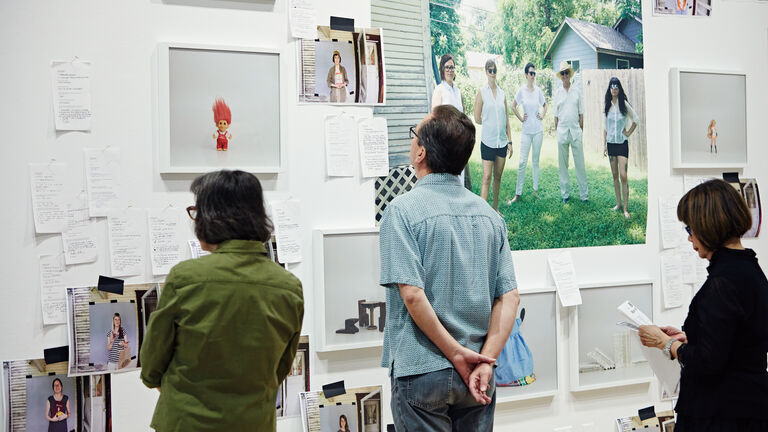
MFA Students
Second-Year Graduates

Shuyuan Zhou 周书苑
Shuyuan Zhou (she/her) (b. 2001) is a Chinese visual artist and poet. Her artistic passion lies mainly in the impact of patriarchal society and generational trauma on self-identity in China. In terms of her work, she tries to combine photographic images with diverse mediums such as installation art, experimental video, and poetry.
Zhou received her BFA in Media and Arts from Duke Kunshan University and her BA in Interdisciplinary Studies from Duke University and is currently an MFA candidate at School of the Art Institute of Chicago.
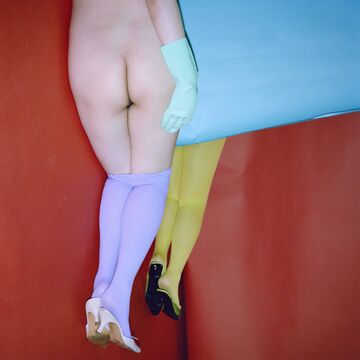
lili xie
Lili Xie is an artist who works in photography, performance, and short films. In her most recent work she uses models and studio photography to explore identity. Lili is full of vague, skeptical cognition and uncertainty of herself, which gives her imagination as well. Actually, she expresses her different images through others’ bodies. The process of shooting is also a process of self-recognition. Her curiosity about the outside world comes from her curiosity about herself. They become her other skin in the images.
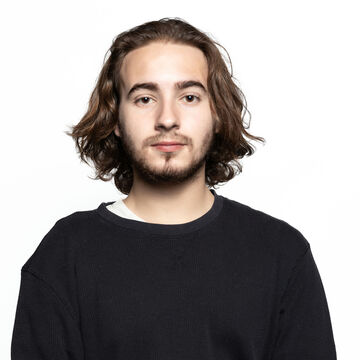
Leonardo Gabriel do Amaral
Personal Statement: I was born and raised in São Paulo, Brazil. I was four when I first visited the United States. Year after year, I’d visit. I fell for the long winding highways, the green front lawns, the textbook houses, suburbs and cul-de-sacs, yellow school buses, SUVs, strip malls, fast food joints, megastores, and supermarkets. I fell in love with America, with the dream. In my brief time living in the US as a Brazilian, I came to find assimilation wouldn't be possible for me. I would always be othered, even when trying my best to hide my identity. Yet, my feelings of love and admiration for America remained. My work focuses on trying to reconstruct the American mythos and placing myself as archetypes key to its existence. I hope to use my work to highlight and platform Brazilian artists both in academia and in the art world.
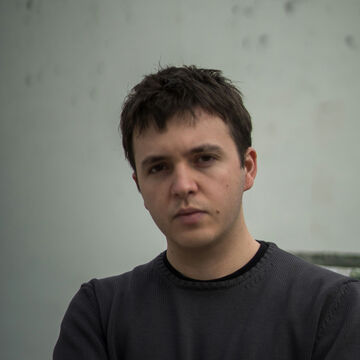
Pedro Albertini
Personal Statement: I collect insects and small objects as if they were memories, words, and images. These encounters serve as a medium to observe death and fertility, marked by the unchanging evidence of periodic death and the acknowledgment of the fecundity that surrounds us.
My exploration taps into the intimate realm, guided by observation and typically expressed through photography and installation.
The methodology is rooted in pseudo-scientific processes, leading to visual taxonomic proposals that are pictorial and abstract. The outcome, often influenced by alchemical processes or my exploratory approach, eludes my control. The images oscillate between hyperfocus and distortion, high definition and obscurity, exploring death, its relationship with human observation, and the experience of time.
In my work, stillness is not just a theme but a witness to history. In Chile, memories of trauma drift through windows with the slightest breeze, carrying a persistent viciousness. This compels me to create images that remain static and suspended. Living in the aftermath of dictatorship, my generation navigates and reshapes our experiences of pain, creating a space for the emergence of fragility.
This focus on life and death is a recalibration of self, serving not just me but, hopefully, my generation in finding our voice by reshaping pre-verbal experiences. Is it merely light? Perhaps it is something that must be discerned from the smallest occurrences, from the tiniest objects and beings encountered.
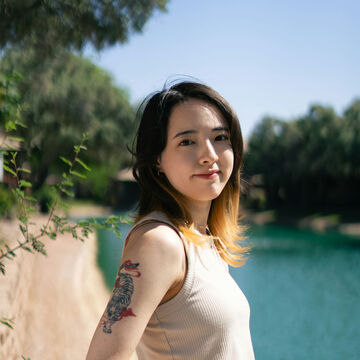
Haru Andersen
Haru Andersen (she/her) (b. 1998) uses photography as a tool to document and further her understanding of the society we live in today, especially in urban areas stemming from her interest in urban sociology. Majoring in media, culture, and communication as an undergraduate at the International Christian University in Tokyo Japan, Haru’s interest in media as a tool of expression eventually landed her in the direction of photography. Haru’s interest in sociology, philosophy, and religion are all vital aspects to her work as she finds meaningful subjects to capture within cities that align with her interests.
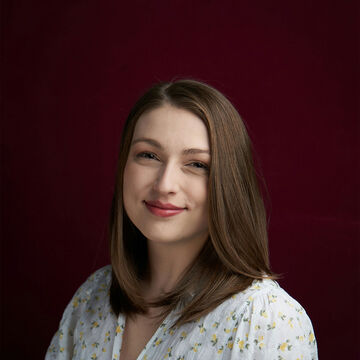
Lauren Bertelson
Lauren Bertelson (she/her) (b. 2000) is an interdisciplinary artist whose work examines domesticity, labor, gender, and the multigenerational transfer of these concepts through self-portraiture, installation, craft, and sculptural practices. In 2022, she received a SOURCE Grant to develop her ongoing body of work, Like Mother, Like Daughter, which centers itself around the generational obligations and rewards stemming from traditions and norms of domesticity. Bertelson holds a BFA in Art Photography from Syracuse University.
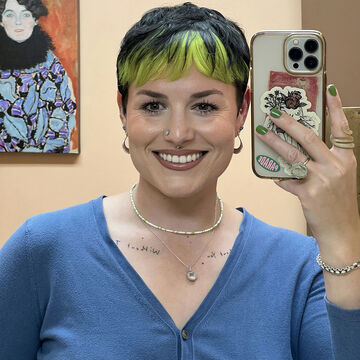
Serena Beggs
Personal Statement: In my journey as a photographer, I draw inspiration from intimate moments that resonate deeply with personal and universal truths. Initially drawn to the vulnerability of nudity, influenced by my upbringing surrounded by my parents' intimate portraits, my work has evolved beyond the physical form. Documenting significant life experiences has become central to my artistic exploration. My portfolio explores themes ranging from milestones in sobriety to the complexities of infertility, and fundamental aspects of human existence such as desire, self-acceptance, and mortality.
Through projects like A Design for Living, I challenge conventional narratives of alcoholism, celebrating freedom and growth in sobriety. Similarly, 1 in 10 sheds light on the emotional landscape of infertility, drawing from my own journey with polycystic ovarian syndrome. This series aims to amplify voices and make space for understanding.
My art extends beyond traditional subjects, exploring sexuality and mortality through unexpected lenses like vegetable erotica and portraits of deceased birds. These themes challenge perceptions, solidifying my belief in art's power to provoke dialogue and reshape perspectives.
I am most looking forward to working with a new group of artists so that we may push and inspire each other during our time here. I believe an artist is a culmination of many influences and I cannot be the kind of creator I am without a wonderful community beside me.
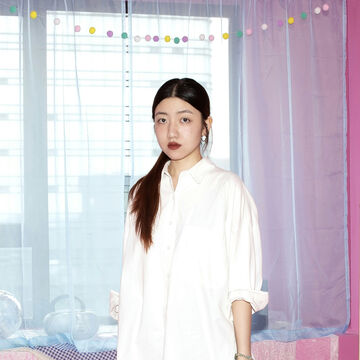
Zhongxuan Niu
Personal Statement: When you step into northeastern China and explore the land that once prospered due to industrial development, you may find some traces of Texas or the Ruhr area of Germany. I grew up in this place where enthusiasm and solemnity intersect. After graduating from high school, I was admitted to the China Academy of Art and moved to a completely different southern city.
In the past two years, I have gradually started to create photographic works "seriously." My photographic creation process is more like an examination of myself, linking the personal to the world, which constantly makes me ponder how "I" was formed and why "I" have become this way. At the same time, I am also working on installation art with themes of the universe and the future, and I draw inspiration from them to design visual materials such as posters, videos, and models.

Yudie Zhang
Zhang Yudie (ida) (she/her/hers) was born in 2001. Her artistic endeavors revolve primarily around photography and installations. In her creations, she delves into shared human experiences and cognitive processes, exploring language, memory, sensory encounters, and the collective emotions associated with "kitsch." However, her work consciously avoids being limited to an anthropocentric viewpoint; instead, it embraces a self-reflective nature, contemplating issues on a larger scale.
Yudie focuses on the interaction between humans and the material world. She explores how the physical body acts as an intermediary that allows humans to gain sensory experiences and how objects reveal the construction of metaphysical concepts and cognition.
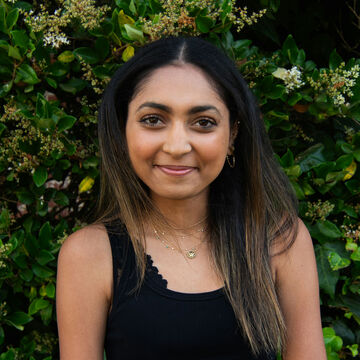
Tanya Shah
Tanya Shah (she/her) (b. Mumbai, 1997) is a Los Angeles-based visual artist. Shah received her Bachelor of the Arts from Dartmouth College in Computer Science and Studio Art with High Honors, and her IB Diploma from the German Swiss International School of Hong Kong. Her work has been nationally exhibited in venues such as the Jaffe-Friede Gallery in New Hampshire and Praxis Gallery in Minnesota, and internationally exhibited in London. She has worked as a teaching assistant at the International Center of Photography in the Lower East Side of Manhattan, as a studio assistant to Letha Wilson amongst other artists, and as a gallery assistant in both Hong Kong and Los Angeles.
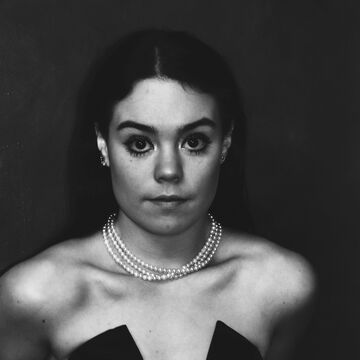
Berkley Reddick
Berkley Reddick (she/her) is an emerging artist, working primarily in analogue photography and mixed media installations. She often focuses her work on the idea of the unseen, engaging with individuals, communities, and locations generally overlooked by the public. In these ways she can honestly document the unconventional locations and unique people she experiences life with. Her work stands as a documentation of time: an unapologetic collection of moments representing strong bonds, formed through artistic collaboration and shared experiences.
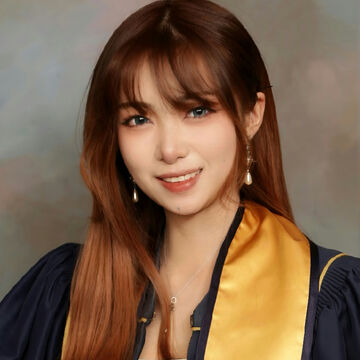
Zixi Wang
Personal Statement: The quest for meaning is meaning in itself.
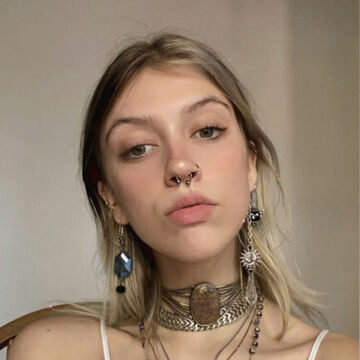
Hanora Lincoln
Personal Statement: Our skin is a supple semi-permeable membrane that aids and maintains the integrity of the body. It provides a boundary and serves as the medium of passage between the body and its surrounding environment. Hugging tight onto our muscles and bones, its job is to protect us. Yet over time we have developed a negative view against the skin that rests on our own backs. It becomes easy to forget how its contours are beautifully curved, how our flesh folds and shifts in color when engulfed in light, or how it transforms completely when exposed to trauma. Its role has evolved, no longer is our skin just a defense mechanism to the physical world. We now sit for hours picking at its unevenness and poking at the parts that we have deemed unlovable. Our bodies bear such intense pain and stress, often leaving the feeling of distortion, now prone to focus on the imperfections instead of the innate loveliness.
Our relationships with our body have become dysmorphic and unfamiliar. We recognize the shapes but do not read them as our own. My work aims to address and regain the image of the body through the personal experiences of my peers and myself. I vary the scale, medium, and quantities in each piece to portray the severity and overwhelming moments that many, including myself, deal with daily. I aim to push away from the traditional representations of the human body in photography. I seek to find ways of creating or discovering scenes that elicit emotion from their viewers, creating a shared experience with different means of materials.
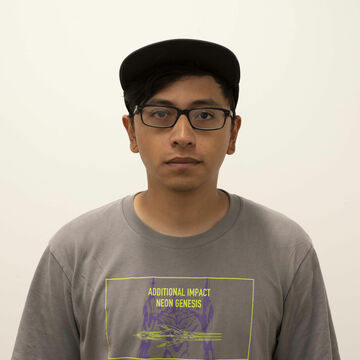
Hugo Amarales
Hugo Amarales is a visual artist and photographer based in Southern California. As a Mexican American his works revolve around the interactions of navigating both his cultures. A second-generation Mexican American, he explores the nuances between having to assimilate to American culture while still maintaining his Mexican heritage. He works primarily with photography, both digital and analog. He gets his influence from Mexican folk art, Mexican traditions, post-modern and contemporary art to create work that is relative to his experiences.
First-Year Graduates

Deyi (Evelyn) Zeng
Deyi Zeng (she/her) (b. 2003) is a Chinese visual artist from Beijing. She holds a BA in Media Arts Production from Emerson College and is pursuing an MFA in Photography at the School of the Art Institute of Chicago.
Her work combines photography, installation, and archives to explore identity, illness, migration, and memory. One recent project traces a traditional Chinese medicine practitioner's migration to Boston, examining how healing practices adapt within diasporic communities and reframe the meaning of “home.”
Another project draws on her experience with congenital heart disease, using biological imagery and surgical symbols to question how medical intervention reshapes the body and self-perception.
Zeng’s practice offers an intimate view into the shifting boundaries of autonomy, belonging, and transformation.

Ariel J Cobbert
Ariel Cobbert (she/her) is a visual artist from Hattiesburg, Mississippi. Through a photographic approach to materials and image-making, her work explores Black Southern identity, memory, and care through the use of family archives, vernacular aesthetics, and everyday ritual. Rooted in both historical research and personal narrative, Cobbert’s practice interrogates the production of images and the ways Black life has been recorded, obscured, and reclaimed through photography. Her work is included in the permanent collection of the Brooks Museum of Art. Her work has been published in Essence Magazine, CNN, Smithsonian Magazine, NPR, and The New York Times.

Yunan
Most of the time, I tend to observe and perceive the surroundings silently and store my feelings in mind. I believe the world today looks more like a confusing magnetic ball, where different positions, sounds, and events are mixed together, making it difficult for me to always feel accurately and distinguish between true and false in real life. I don't think it is reasonable to passively come to terms with these changes or problems, so I need to keep my mind open and turn these feelings into a form of expression, while maximizing the limit of perception by visualization in this vision-dominated era.

tierani bryan
Making has always been my way of navigating the fragile and often transient connections that define human relationships. My work explores themes of desire, ephemerality, and the emotional resonance of fleeting interactions. Through conceptual and experimental practices, I question the lifespan of an artwork, not just as an object, but as a living extension of human connection. I am often thinking about the materials themselves and how they play a part in these time-based works. These experiments are also about embracing the unknowable: the audience and meaning that my work accumulates over time, all while defying permanence and interrogating the ways we can document and experience the ephemeral.

Xuemeng Li
Xuemeng Li (he/him) (b. 2000, Yueyang, China) is a young artist working primarily with photography and moving images. His recent works explore human-water relationships and internalized experiences related to dreams and Eastern philosophy. Li's work has been exhibited internationally, including at the Blanc Gallery (New York, 2024), Banshan Gallery (Tokyo, 2023), Three Shadows Photography Art Center (Xiamen, 2022), and Xie Zilong Photography Museum (Changsha, 2020), among others.
Disclaimer: All work represents the views of the individual artists and authors who created them and are not those of the School or museum.